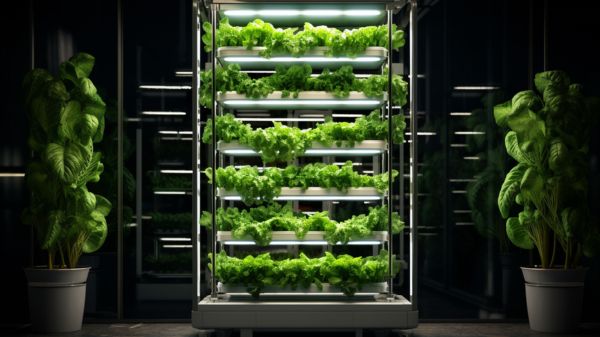What Are Effective Temperature Control Methods for Houseplants?
Nearly 67% of plant lovers believe that maintaining the right temperature is key to their houseplants’ survival and growth. As you cherish the lush greenery in your home, it’s crucial to understand that your leafy friends thrive when you keep their environment cozy and stable.
You’re not just a plant owner; you’re part of a community that values the well-being of every frond and petal. By using a smart thermostat or an AC controller with sensors, you can tailor the climate to suit your plants’ needs. It’s about creating a little haven where your plants feel right at home.
You can adjust the settings to mimic natural temperature fluctuations, ensuring your green buddies are not just surviving, but flourishing under your care.
Understanding Plant Thermoregulation
Before you can effectively regulate the temperature for your houseplants, it’s essential to grasp how many of them manage their internal heat.
As a dedicated plant caretaker, you’re part of a community that understands how temperature and humidity intertwine to affect plant growth. Plants benefit from maintaining an ideal temperature, which enables them to perform crucial processes like photosynthesis.
The sensitivity of plants to temperature changes means that you must monitor temperature ranges throughout the day and night. Remember, while tropical species thrive in warm environments, flowering plants often require cooler nighttime temperatures.
Temperature Control, therefore, isn’t just about comfort; it’s about providing the conditions your leafy companions need to flourish. Being mindful of temperature throughout the seasons keeps your plants healthy and, in turn, makes your green sanctuary thrive.
Ideal Temperature Ranges
You’ll need a temperature management plan that caters to your houseplants’ species-specific needs, ensuring they stay within their ideal temperature ranges for optimal health. Most indoor plants prefer daytime temperatures between 70-80°F, which encourages photosynthesis, particularly beneficial for tropical plants.
At night, a cooler temperature, typically 65-70°F, is advised. However, tropical varieties such as ferns and palms can endure cooler night temperatures down to 60-65°F, but not below 50°F.
Implementing temperature control methods is crucial, especially during periods of high temperatures. Air conditioning can both cool and slightly increase humidity, creating a more conducive environment. For succulents and cacti, the optimal range is broader, with acceptable temperatures spanning from 60-75°F.
Insulating Plant Environments
To maintain your houseplants’ health, several insulation strategies can safeguard them from drastic temperature changes. In your indoor garden, creating stable conditions is key to optimal growth and can reduce stress in your cherished plants. Here are some scientific, yet accessible tactics:
- Utilize shade curtains to mitigate warm temperatures and shield against intense light.
- Apply thermal wraps or foam insulation to pots to stabilize root zone temperature.
- Ensure heating and cooling systems are properly sized to maintain consistent air temperature.
- Incorporate horizontal airflow fans to evenly distribute warm or cooler air, preventing signs of stress.
- Monitor the environment with precision, adjusting as necessary to keep your houseplants within their comfort zone, thus insulating plant environments effectively.
Utilizing Climate Devices
After exploring various insulation strategies, let’s now turn our attention to the role climate devices play in maintaining the perfect temperature for your houseplants.
Using smart thermostats and AC controllers with sensitive temperature sensors, you can uphold the ideal indoor temperatures that your plants require for optimal growth. By employing features like Comfy Mode or scheduling, you can tailor the air’s warmth and humidity throughout the day and night, fostering a consistent environment for healthy indoor plants.
Smart climate control devices connect to your smartphone, granting you the power to adjust settings and combat excess moisture or chill even when you’re away. Additionally, systems like Cielo Breez Plus can automatically manage heating systems, ensuring your green companions thrive in a precisely controlled climate.
Monitoring and Adjusting Settings
With climate control technology in hand, you can now focus on fine-tuning temperature settings to meet the specific needs of your houseplants. Monitoring and adjusting settings are vital to ensure indoor temperatures are conducive to optimal growth.
- Regularly check and adjust the thermostat to maintain a consistent indoor temperature.
- Observe your plants for signs of distress such as leaf discoloration, which may indicate a need to move your plants to a more suitable location.
- Tailor the environment for specific species; African Violets thrive in warm conditions, while cacti and succulents prefer cooler temperatures.
- Use a smart AC controller’s Comfy Mode to automatically adjust to your plants’ preferred climate.
- Monitor for stunted growth or flower wilting in flowering plants, which can signal incorrect temperatures.
Conclusion
You must tailor your approach to ensure your houseplants thrive. Employ smart thermostats and AC controllers to maintain optimal temperatures, both day and night.
Consider a ductless unit for precise control, and remember to insulate or shelter your plants during extreme conditions.
By closely monitoring and adjusting your climate devices, you’ll provide the stability your plants need to flourish, demonstrating a scientific understanding of plant thermoregulation and their specific temperature requirements.






